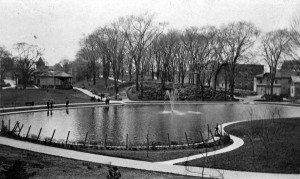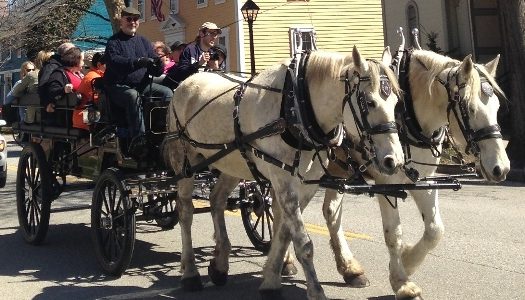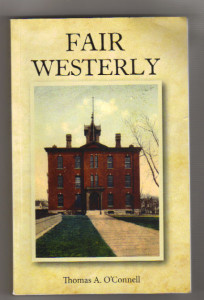The fountain in Westerly’s Wilcox Park Lake (more often called the Pond) started sending streams of water twenty feet into the air on Thursday, September 8, 1908. Remarkably for the time, the water came from an off-site source about a half mile away. How the Wilcox Park Lake received the water supply and some other arcane facts about this gem in Wilcox Park’s center are the subjects of this article.
To begin this story, let’s start with a few observations about Wilcox Park. For instance, if in 1898 Harriet Wilcox hadn’t purchased the seven-acre Rowse Babcock estate and hadn’t given it to the Westerly Memorial and Library Association as a memorial to her husband, Stephen Wilcox, there would not be a Wilcox Park today. And, the park wouldn’t be quite the size it is if the additional nine acres of the Hannah B.W. Brown estate had not been acquired in 1905. If Warren H. Manning, formerly of the famed Frederick Law Olmsted landscape architecture firm, had not come up with the idea of the type of park he wanted to construct, it would not have become a walking park. Too, if another landscape architect, Frank Hamilton, had not followed up on Manning’s concept when the latter sketched out his plans for incorporating the Brown farm into Wilcox Park, perhaps the park might lack its tree-lined hills, broad sweeping lawns, and the jewel at the park’s center—the Lake.[1]
But how does a builder create an artistic body of water when practically no such ornament existed on site? The drawings come first. Then comes the selection of the drawing that best suits the location. Next, the lake’s contours, width, and depth must be staked out. Then excavate all that dirt, and define the lake’s perimeter with sidewalks and retaining walls.

This early postcard depicts the fountain and the protective fence erected at the lake’s deeper end. Also visible are the band gazebo and the barn. The tall building seen through the trees is the Rhode Island Hotel, which was destroyed by fire in 1928. (Author’s Collection)
Is it finally a matter of just adding water? Oh, no. Any gardener can tell you that dirt, or loam, or soil will not hold water. Those earthen materials are too porous. As a solution, cement could be poured over the dirt as a liner. But cement, even if reinforced, will over time crack and leak. Nature’s problem solver is clay. Clay, or hardpan, is so dense and viscous that water penetrates a clay surface at a very slow rate. And, it is cheap to install. Thomas McKenzie, the civil engineer in charge of this project, purchased locally all the clay he required. Simon P. Nichols, a Potter Hill Road farmer [2], sold McKenzie truckloads of the slippery stuff.[3]
While the lake bed was being plastered with clay, there was some related activity way up on Quarry Hill (an area bounded by Tower and Granite Streets). Mining granite has historically been one of Westerly’s key industries. The Smith Granite Company had mined about all it could out of its quarry hole #1. Today, that water-filled hole can be seen behind Granite Street Shopping Center at the Atrium. The Smith Granite folks sensed an opportunity to help with the Wilcox Park project. They knew from experience that a quarry hole left unattended becomes a water reservoir. For years, quarrymen had observed that unless they unceasingly pumped spring water and ground water, large, expensive machines left on the quarry’s floor would be submerged, become rusted, and ultimately be destroyed. Quarry hole #1 was allowed to fill up to the top. The company had all the water, gratis, that Wilcox Park Lake needed.
To bring the water to the park was a relatively easy affair. A conduit of pipes was buried in the hillside running downhill parallel to Granite Street. When fed into that man-made channel, the water was gravity-fed into the park. But first, engineer McKenzie devised a pumping system to draw the water into a cistern, or large holding tank, under what eventually became the Hoxsie Buick car display lot.
As Isaac G. “Ike” Smith, Jr. tells it, the water was further pumped into another cistern across the road from the first cistern. From the second cistern, as the control valves were opened, the water flowed through pipes sunk below Granite Street under Grove Avenue and finally made its way under the park’s wall and into the lake.[4]
This water conduit project, which had been started earlier in 1908, now began to show promise. Thomas McKenzie let water pour into the lake on the evening of July 29, 1908. His plan was “to put a four inch open pipe at the discharge point, and after the lake is filled to place a cap [on the 4” pipe] with a large center vent surrounded by a number of small ones (holes) to form a fountain.”[5] Nothing permanent could be established, however, until the lake’s clay subsurface had solidified and ceased to “leak” water. Trouble spots would have to be plugged with more of Mr. Nichols’ splendid hardpan. That work took time. And, too, the hot summer days cause faster surface water evaporation. The builder must balance the evaporation rate with a seepage rate to determine how much water would be lost into the ground on a given day with the replacement amount necessary to maintain volume equilibrium. A six-inch layer of gravel was installed over the clay subsurface to keep the clay from repositioning itself due to surface wave action. (That is this writer’s hypothesis.)
Progress was being made. Shrinkage was lessening. The construction workers now had an idea of the amount of water needed to maintain a desired depth. About this time, on Saturday, August 22, Mother Nature dumped nearly four inches of rain upon the town. The cloud burst, lasting from 8 a.m. to 5 p.m., was a record breaker, and caused a problem down at the lake. The storm had artificially “filled the deep part of the north end of the lake . . . and had covered [almost] the entire surface of the lake.” Time would be lost waiting for the unwelcome rainwater to evaporate.
By Tuesday, September 8, no shrinkage had been noticed over the Labor Day weekend. At the lake’s east end “a wire netting [was] erected back of the deep place to keep children and others from falling in.” Shrubs would be installed in the spring.[6]
Because fish were soon to be introduced into the lake, “stones [were] piled atop each other” to afford the fish some protection from the sun. It so happened that Charles W. Willard, proprietor of the universal hardware store on High Street, had been a Rhode Island State Commissioner of Inland Fisheries. With his connections, he was able to broker a deal for a few state fish for the lake. About a month later (October 4) Willard augmented the lake’s piscatorial population when he, Walton F. Clarke, and George Leonard “took about 300 fish from the Pawcatuck River near Boom Bridge with one drawing of a seine.”
There were eight varieties of fresh water fish including several small black bass. The fish were transported immediately to Wilcox Park and placed in their new home. The park folks, led by Park Superintendent, Charles E. Coon, had to hand feed the fish until some aquatic vegetation matured.
By the evening of Thursday, September 10, 1908, a large crowd was entertained by a Westerly Band concert at the park gazebo and the lake’s fountain was spouting for the townsfolks’ delight. The quarry hole up on Quarry Hill was living up to water delivery expectations.
The following Spring, Peleg Lawton of Chestnut Street, while engrossed in a bit of yard cleaning, pushed some leaves aside to discover 1,400 angleworms. He gave them to Mr. Coon at the park for fish food.
All told, founding, planning, constructing and finishing the Pond was a project to which a variety of Westerly residents contributed.
In more recent years, there have been some changes wrought that have affected the lake to differing degrees. For instance, the brook that used to run under the stone bridge in the park now wends its way underground to the Pawcatuck River. Interestingly, Ike Smith remarked that the brook derived its supply of water from sub-surface streams on Oak and Spruce Streets and Newton and Grove Avenues. That brook also handles the runoff from the Wilcox Park Lake.
David J. Panciera, a former Executive Director of the Westerly Public Library, spoke with this writer about the lake: Over the years he had noticed that at three to four year intervals a large fish-eating bird would settle in neighborhood trees. That must have worried the lake fish somewhat. [7]
What worried park officials even more was that one day the quarry’s water would be insufficient to maintain the lake’s water level. During the hundred years since the underground water conduit had been in place there were incipient, but slight, pipe maintenance problems. To rectify the situation, a well was drilled, just in case it was needed.
In 1988, Panciera said the lake was completely drained and cleaned. Some leaks were discovered, so a special kind of clay was imported from near Boston to plug the holes. Draining the lake revealed many species of fish including eels, which were thought to have come down the pipeline from the quarry.
Many town folks will recall that, at the time of the lake’s purging, it was quite choked with lotus lilies. Panciera astutely made a swap with Providence’s Roger Williams Park officials: the Pond’s lotus lilies for Roger Williams Park’s koi(defined as any of various colorful cultivated forms of the common carp, Cyprinus carpio, apparently originating in Japan and other parts of eastern temperate Asia).
The library, park, and lake complex is Westerly’s treasure. The combination gives the town character and value in so many ways. A century and more have passed since Harriet Wilcox said, “The people shall have a park.” She was a thoughtful, generous woman, and we are eternally in her debt.
[1] Robert M. Driscoll and Dwight C. Brown, Jr. (editors), In the Park, 100 Years in Wilcox Park (Westerly, R.I.: Memorial and Library Association of Westerly, 1998), Introduction. [2] Westerly Automatic Telephone Company Directory No. 16, July 1, 1910, p. 21. [3] Westerly Daily Sun, August 23, 1908. [4] Author interview with Isaac G. “Ike” Smith, Westerly granite historian. [5] Westerly Daily Sun, July 30, 1908. [6] Westerly Daily Sun, September 8, 1908. [7] Author’s interview with David J. Panciera, former Executive Director of the Westerly Public Library.
























